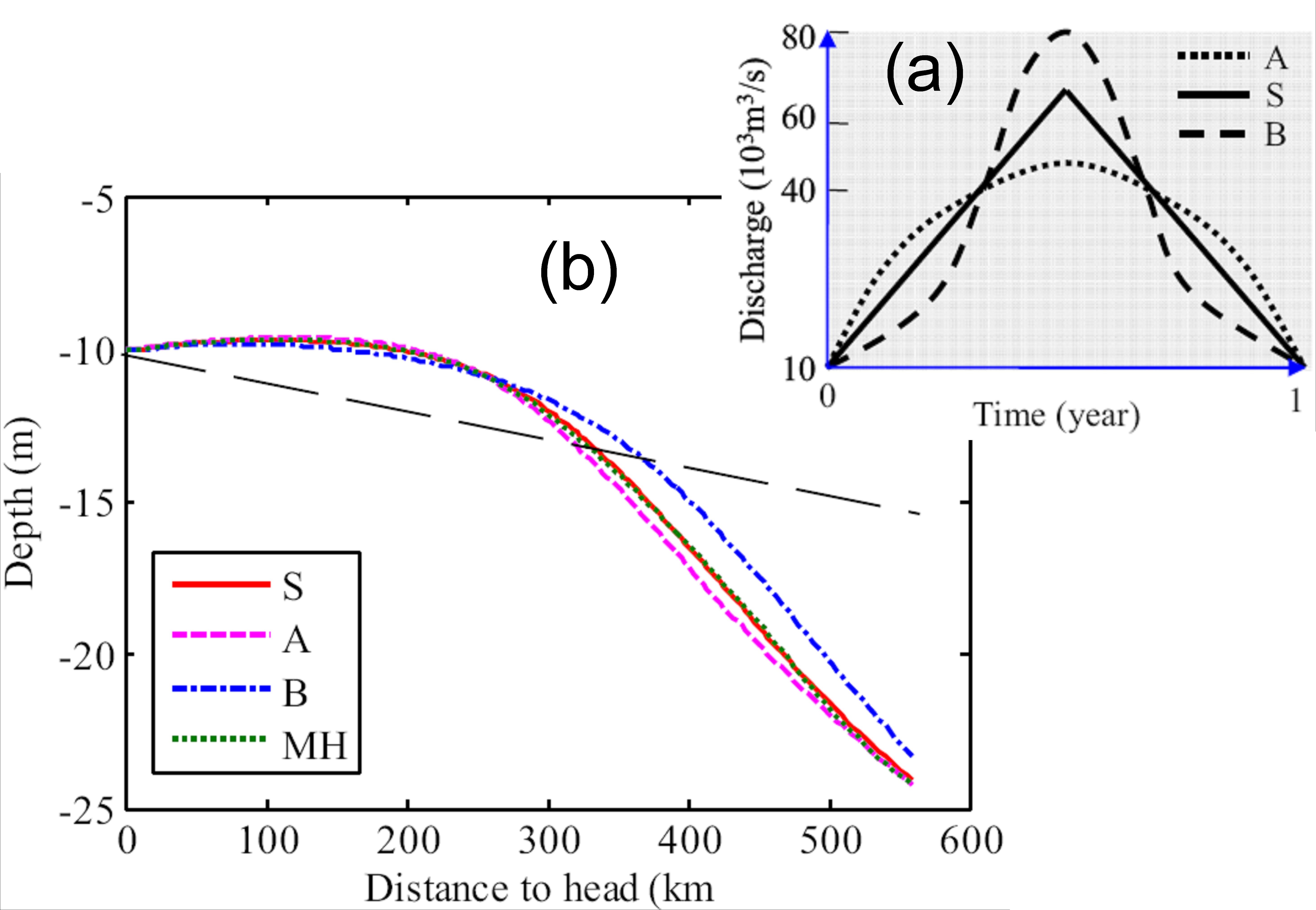Exploration of the impact of seasonal river discharge variations on long-term estuarine morphodynamic behavior
Rivers supply sediment to estuaries and alter estuarine tidal wave regimes. However, the long-term (in century) impact of seasonally varying river discharges on estuarine morphodynamics is not well understood. Process based models are useful tools to analyze these morphodynamic processes. This study aims to explore modeling techniques to efficiently include the impact of discharge seasonality on long-term estuarine morphodynamic development by a process-based morphodynamic model. Inspired by the dimensions and hydraulic forcing of the Yangtze River estuary, we evaluate three methodologies to schematize a river discharge hydrograph in a 1-D morphodynamic model. These are a representative constant discharge, a non-compressed hydrograph and a compressed hydrograph. To shorten computational time, the latter methodology decreases the timescale of seasonal river flow variations compared to the tidal timescale. Sensitivity analysis suggests that the yearly averaged sediment transport controls long-term morphodynamic development. Morphodynamic equilibrium is reached after millennia when deposition during a high river flow period is balanced by erosion during a low river flow period. An important finding is that a yearly hydrograph can be squeezed in time up to a factor of 20, without leading to unrealistic river–tide interactions. Applying a constant river discharge may not produce equilibrium bed profiles that are similar to that under hydrograph forcing due to the non-linearity in sediment transport. The long characteristic timescales in defining morphodynamic equilibrium indicate that a long-term view is needed to interpret large scale estuarine morphodynamics. Though simple and highly schematized, the modeling experiments in this study provide conceptual understanding of morphodynamics in river-influenced estuaries.
Fig 1. (a) Hydrographs with different shapes.; (b) Bed profiles on near equilibrium condition over 3000 years along the estuary, in the sensitivity scenarios forced by different hydrographs
Fig 2. Cross-sectionally integrated, tide averaged sediment transport at the head and at themouth over one year (one hydrograph) for A and B hydrographs: (a) at the beginning (0 year) and (b) at the end (3000 years) of morphodynamic simulations.
List of relate results:
-
Coastal Engineering ,
2015 ,
95
: 105-116


